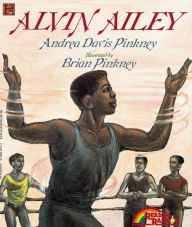Peter Sis recently received a Caldecott Honor for Tibet Through the Red Box. He lives in New York City with his wife and two children.
Starry Messenger: Galileo Galilei
by Peter Sís
Paperback
(Reprint)
- ISBN-13: 9780374470272
- Publisher: Square Fish
- Publication date: 09/01/2000
- Edition description: Reprint
- Pages: 40
- Sales rank: 30,002
- Product dimensions: 9.02(w) x 12.00(h) x 0.17(d)
- Lexile: 830L (what's this?)
- Age Range: 6 - 10 Years
Choose Expedited Delivery at checkout for delivery by. Monday, December 2
"If they had seen what we see, they would have judged as we judge." — Galileo Galilei
In every age there are courageous people who break with tradition to explore new ideas and challenge accepted truths. Galileo Galilei was just such a man—a genius—and the first to turn the telescope to the skies to map the heavens. In doing so, he offered objective evidence that the earth was not the fixed center of the universe but that it and all the other planets revolved around the sun. Galileo kept careful notes and made beautiful drawings of all that he observed. Through his telescope he brought the starts down to earth for everyone to see.
By changing the way people saw the galaxy, Galileo was also changing the way they saw themselves and their place in the universe. This was very exciting, but to some to some it was deeply disturbing. Galileo has upset the harmonious view of heaven and earth that had been accepted since ancient times. He had turned the world upside down.
In this amazing new book, Peter Sís employs the artist's lens to give us an extraordinary view of the life of Galileo Galilei. Sís tells his story in language as simple as a fairy tale, in pictures as rich and tightly woven as a tapestry, and in Galileo's own words, written more than 350 years ago and still resonant with truth. This title has Common Core connections.
Starry Messenger is a 1997 Caldecott Honor Book.
Customers Who Bought This Item Also Bought
-
- The Wall: Growing Up Behind…
- by Peter SísPeter Sis
-
- Elizabeth Leads the Way:…
- by Tanya Lee StoneRebecca Gibbon
-
- Odd Boy Out: Young Albert…
- by Don Brown
-
- Electrical Wizard: How Nikola…
- by Elizabeth RuschOliver Dominguez
-
- On a Beam of Light: A Story of…
- by Jennifer BerneVladimir Radunsky
-
- Action Jackson
- by Jan GreenbergSandra JordanRobert Andrew Parker
-
- Rachel Carson and Her Book…
- by Laurie LawlorLaura Beingessner
-
- Manfish: A Story of Jacques…
- by Jennifer BerneEric Puybaret
-
- The Fantastic Undersea Life of…
- by Dan Yaccarino
-
- A Picture Book of George…
- by David A. AdlerDan Brown (6)
-
- The Story of Johnny Appleseed
- by AlikiAliki
-
- Duke Ellington: The Piano…
- by Andrea Davis PinkneyBrian Pinkney
-
- The Boy Who Invented TV: The…
- by Kathleen KrullGreg Couch
-
- Abe Lincoln: The Boy Who Loved…
- by Kay WintersNancy Carpenter
-
- A Boy Called Slow
- by Joseph Bruchac
-
- Alvin Ailey
- by Andrea Davis PinkneyBrian Pinkney
-
- Can't You Make Them Behave…
- by Jean FritzMargot TomesTomie dePaola
Recently Viewed
“An original. . .Sís celebrates the life, ideas, and genius of Galileo in a picture book that achieves a brilliance of its own.” —Starred, Booklist
“Original and exquisite. . .Sís manages to tell the relatively complicated story of Galileo in such a simple, straightforward way, accompanied by some of the most gorgeous illustrations imaginable.” —The New York Times Book Review

















